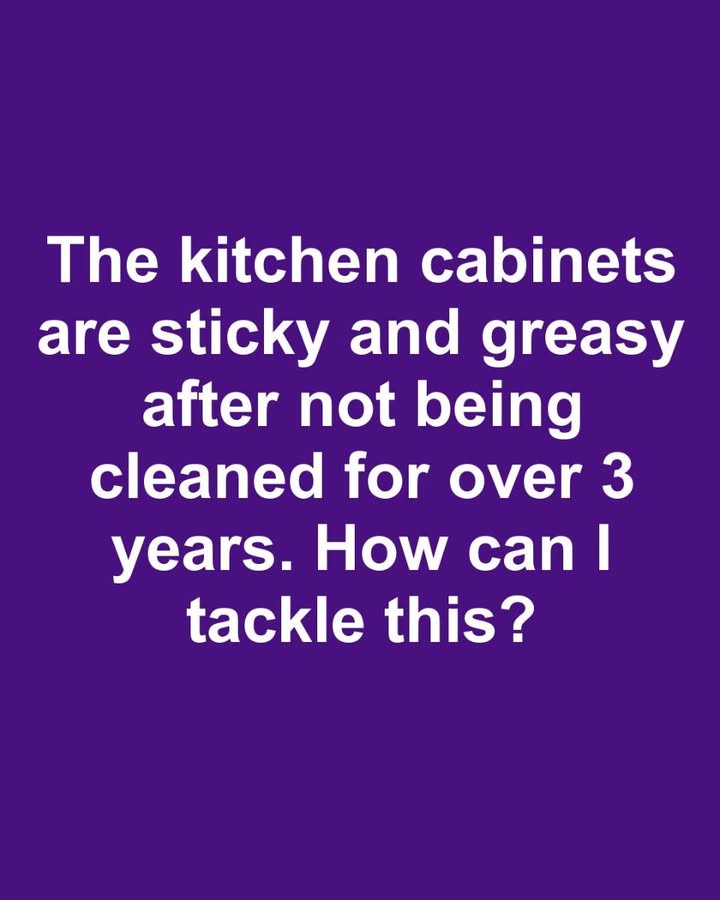The kitchen is often considered the heart of the home—a space where meals are prepared with love, where families gather, and where countless memories are made. But while you may focus on the food and the fun, one part of the kitchen that often gets overlooked is the cabinets.

After years of cooking, frying, baking, and simmering, your kitchen cabinets can become coated in a thick, sticky film of grease and grime. This buildup doesn’t just make your cabinets look dull and dingy; it also attracts dust and dirt, creating a cycle of filth that gets harder to break the longer it’s ignored. If it’s been more than three years since your cabinets had a good deep cleaning, it’s probably time to take action. What you’re seeing on your cabinet surfaces is the result of a gradual layering of airborne particles—cooking oils, vapors, and fats released into the air every time you sauté, sear, or simmer. These particles cling to nearby surfaces and, when combined with dust and other kitchen debris, form a sticky, often stubborn film that regular surface wiping can’t handle.
While the sticky residue may start off light and manageable, over time it hardens and darkens, making your once beautiful cabinetry look old, neglected, and even unsanitary. This is especially common in homes that cook frequently or those with poor ventilation or no range hood to suck up all those cooking fumes. The longer you wait to clean it, the more elbow grease you’ll need to get things back to clean. The key to tackling greasy cabinets lies in using the right cleaning techniques and solutions. While water alone won’t do the job, adding a few drops of a grease-cutting dish soap to warm water can make a world of difference. Dish soap is designed to break down fats, and when applied with a microfiber cloth or soft sponge, it can start loosening the grease from the surface. For more serious grime, a mix of white vinegar and water can help cut through stubborn buildup.
Vinegar acts as a natural degreaser and disinfectant, making it an ideal choice for cleaning kitchen surfaces. For heavy-duty messes that dish soap and vinegar can’t handle, try a paste made of baking soda and water. Gently scrub the paste into greasy areas with a soft-bristle brush or old toothbrush to lift dirt without scratching cabinet surfaces. Just be cautious with wood finishes, as harsh scrubbing or using too much water can damage the finish or cause warping. Always wipe down with a clean, damp cloth afterward, and dry immediately with a towel to prevent moisture damage.
Once your cabinets are clean, consider applying a small amount of wood polish or mineral oil to nourish and protect the wood and give it a fresh shine. This step not only enhances the look of your cabinetry but also creates a light barrier against future grease and grime. Maintaining clean cabinets is much easier than restoring them after years of buildup, so be proactive moving forward. Incorporate a monthly cabinet wipe-down into your cleaning routine using a damp cloth and mild soap. After heavy cooking sessions, especially when frying or using lots of oil, quickly wipe any nearby cabinets to prevent residue from setting in. Turn on your exhaust fan or open a window while cooking to help vent grease and steam away from your surfaces. Prevention is often easier than restoration, and these small steps can save you a lot of work down the road. If the idea of cleaning every cabinet in one sitting feels overwhelming, break the task into sections. Do a few doors each day until you’ve covered the whole kitchen. It’s okay to take your time, especially if the buildup has been accumulating for years. The important thing is to start now and make it part of your regular home care routine. Giving your cabinets the attention they need not only improves the appearance of your kitchen but also helps maintain a cleaner, healthier home environment. When your cabinets are free of grease and shine like new, your entire kitchen feels brighter, fresher, and more inviting—a space you can truly be proud of.





